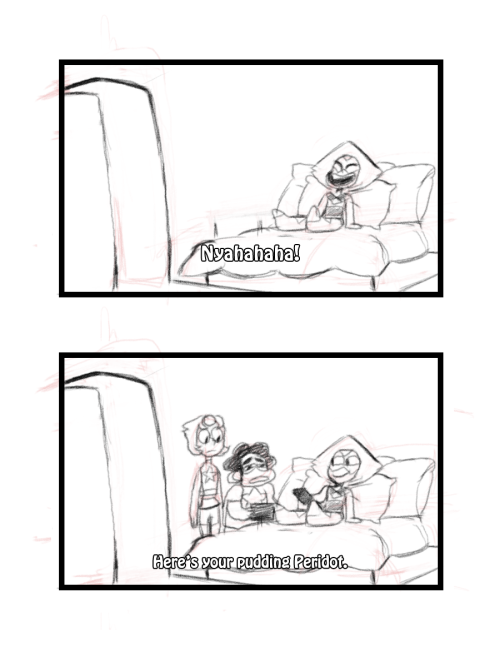I Love Seeing Other Worlds Through The Eyes Of Artists!
I love seeing other worlds through the eyes of artists!

Artist Rendition of Saturns moon Titan
js
More Posts from Spacecheesus-blog and Others
Neat!

Traveling to Mars (safely AND quickly) with plasma rockets
There has been quite a bit of hype about getting people to Mars. But traveling 35 million miles to the red planet will require a new breed of rockets that are much more powerful and efficient than traditional chemical-fueled rockets.
It takes *A LOT* of fuel to get into space. The Saturn V, which launched spacecraft to the moon, required fuel tanks that were taller than the Statue of Liberty. Traveling to Mars, which is 200 times farther than the moon, means that we would need to build an even bigger rocket that can carry 200 times more fuel — a highly impractical quest.

So NASA researchers are working on a new kind of rocket with electric thrusters that can travel at high speed using less fuel. These plasma rockets can get spacecraft to the moon with one-tenth the tank of fuel used by Saturn V, and are capable of cutting a risky trip to Mars down from two years to less than two months.
Even though plasma rockets are ideal for long-term spaceflight, they do have some shortcomings.
To create plasma, a gas-like matter that’s as hot as the sun, radio waves are used to heat a gas propellant. The problem is that during the heating process, charged ion particles are expelled, causing damage to the thruster’s walls that could potentially lead to a catastrophe.
So what if there was a way that the wall could repair itself?
Gary Li, a UCLA aerospace engineering grad student, is figuring out a way to do just that. In the video below, he explains how his research could help humans travel safely and quickly to Mars:

NASA Astronomy Picture of the Day 2016 October 1
Rosetta’s Farewell
After closely following comet 67P/Churyumov-Gerasimenko for 786 days as it rounded the Sun, the Rosetta spacecraft’s controlled impact with the comet’s surface was confirmed by the loss of signal from the spacecraft on September 30, 2016. One of the images taken during its final descent, this high resolution view looks across the comet’s stark landscape. The scene spans just over 600 meters (2,000 feet), captured when Rosetta was about 16 kilometers from the comet’s surface. Rosetta’s descent to the comet brought to an end the operational phase of an inspirational mission of space exploration. Rosetta deployed a lander to the surface of one of the Solar System’s most primordial worlds and witnessed first hand how a comet changes when subject to the increasing intensity of the Sun’s radiation. The decision to end the mission on the surface is a result of the comet’s orbit now taking it to the dim reaches beyond Jupiter where there would be a lack of power to operate the spacecraft. Mission operators also faced an approaching period where the Sun would be close to line-of-sight between Earth and Rosetta, making radio communications increasingly difficult.
I couldn't help but laugh maniacally.
![Kitty Stair Surfing. [video]](https://64.media.tumblr.com/2e45442c99117a59bc690a293842f84a/tumblr_nx38i3mSjM1s02vreo1_400.gif)
Kitty stair surfing. [video]




패러디
Largest Collection of Planets EVER Discovered!
Guess what!? Our Kepler mission has verified 1,284 new planets, which is the single largest finding of planets to date. This gives us hope that somewhere out there, around a star much like ours, we can possibly one day discover another Earth-like planet.

But what exactly does that mean? These planets were previously seen by our spacecraft, but have now been verified. Kepler’s candidates require verification to determine if they are actual planets, and not another object, such as a small star, mimicking a planet. This announcement more than doubles the number of verified planets from Kepler.

Since the discovery of the first planets outside our solar system more than two decades ago, researchers have resorted to a laborious, one-by-one process of verifying suspected planets. These follow-up observations are often time and resource intensive. This latest announcement, however, is based on a statistical analysis method that can be applied to many planet candidates simultaneously.
They employed a technique to assign each Kepler candidate a planet-hood probability percentage – the first such automated computation on this scale, as previous statistical techniques focused only on sub-groups within the greater list of planet candidates identified by Kepler.
What that means in English: Planet candidates can be thought of like bread crumbs. If you drop a few large crumbs on the floor, you can pick them up one by one. But, if you spill a whole bag of tiny crumbs, you’re going to need a broom. This statistical analysis is our broom.

The Basics: Our Kepler space telescope measures the brightness of stars. The data will look like an EKG showing the heart beat. Whenever a planet passes in front of its parent star a viewed from the spacecraft, a tiny pulse or beat is produced. From the repeated beats, we can detect and verify the existence of Earth-size planets and learn about their orbits and sizes. This planet-hunting technique is also known as the Transit Method.

The number of planets by size for all known exoplanets, planets that orbit a sun-like star, can be seen in the above graph. The blue bars represent all previously verified exoplanets by size, while the orange bars represent Kepler’s 1,284 newly validated planets announced on May 10.

While our original Kepler mission has concluded, we have more than 4 years of science collected that produced a remarkable data set that will be used by scientists for decades. The spacecraft itself has been re-purposed for a new mission, called K2 – an extended version of the original Kepler mission to new parts of the sky and new fields of study.

The above visual shows all the missions we’re currently using, and plan to use, in order to continue searching for signs of life beyond Earth.
Following Kepler, we will be launching future missions to continue planet-hunting , such as the Transiting Exoplanet Survey Satellite (TESS), and the James Webb Space Telescope. We hope to continue searching for other worlds out there and maybe even signs of life-as-we-know-it beyond Earth.
Make sure to follow us on Tumblr for your regular dose of space: http://nasa.tumblr.com
SpaceX Update:
The Jason-3 launch was successful.
The landing attempt on the droneship, however, didn’t go perfectly. The rocket booster is “on target at droneship” but SpaceX has said that a landing leg was broken due to a hard landing. I don’t know exactly what this means for the booster quite yet. I’ll update when I find out.
The real battle is who can stare each other down the longest.
Attack Commences in 30 Seconds.jpg

-
 leda-timeandspace liked this · 11 months ago
leda-timeandspace liked this · 11 months ago -
 maishazjohnson liked this · 2 years ago
maishazjohnson liked this · 2 years ago -
 saosmshi liked this · 3 years ago
saosmshi liked this · 3 years ago -
 encounterthis reblogged this · 3 years ago
encounterthis reblogged this · 3 years ago -
 lustingdesires liked this · 3 years ago
lustingdesires liked this · 3 years ago -
 futuristicaliencowboybanana liked this · 4 years ago
futuristicaliencowboybanana liked this · 4 years ago -
 iliveinfandoms reblogged this · 5 years ago
iliveinfandoms reblogged this · 5 years ago -
 iliveinfandoms liked this · 5 years ago
iliveinfandoms liked this · 5 years ago -
 yee-to-my-haw liked this · 5 years ago
yee-to-my-haw liked this · 5 years ago -
 desertlorn reblogged this · 5 years ago
desertlorn reblogged this · 5 years ago -
 animadiicristallo liked this · 5 years ago
animadiicristallo liked this · 5 years ago -
 theforgottenages liked this · 6 years ago
theforgottenages liked this · 6 years ago -
 metalzoic liked this · 6 years ago
metalzoic liked this · 6 years ago -
 crazybasementwhispers liked this · 6 years ago
crazybasementwhispers liked this · 6 years ago -
 pnktst reblogged this · 6 years ago
pnktst reblogged this · 6 years ago -
 daemondamian reblogged this · 6 years ago
daemondamian reblogged this · 6 years ago -
 nogi-nogitsune liked this · 6 years ago
nogi-nogitsune liked this · 6 years ago -
 crimsonfated reblogged this · 6 years ago
crimsonfated reblogged this · 6 years ago -
 crimsonfated liked this · 6 years ago
crimsonfated liked this · 6 years ago -
 daemondamian liked this · 6 years ago
daemondamian liked this · 6 years ago -
 rosybrooke reblogged this · 6 years ago
rosybrooke reblogged this · 6 years ago -
 rosybrooke liked this · 6 years ago
rosybrooke liked this · 6 years ago -
 kaleka0 liked this · 6 years ago
kaleka0 liked this · 6 years ago -
 dani-glz-maltes liked this · 6 years ago
dani-glz-maltes liked this · 6 years ago -
 iamdefinitelynotanalien liked this · 6 years ago
iamdefinitelynotanalien liked this · 6 years ago -
 fictionsthings reblogged this · 6 years ago
fictionsthings reblogged this · 6 years ago -
 fictionsthings liked this · 6 years ago
fictionsthings liked this · 6 years ago -
 algo-magico-blog liked this · 6 years ago
algo-magico-blog liked this · 6 years ago -
 xlovestonedx liked this · 6 years ago
xlovestonedx liked this · 6 years ago -
 diosita-de-la-lluvia liked this · 6 years ago
diosita-de-la-lluvia liked this · 6 years ago -
 scootis-the-scoot liked this · 6 years ago
scootis-the-scoot liked this · 6 years ago -
 i-do-my-best-to-find-myself reblogged this · 6 years ago
i-do-my-best-to-find-myself reblogged this · 6 years ago -
 i-do-my-best-to-find-myself liked this · 6 years ago
i-do-my-best-to-find-myself liked this · 6 years ago -
 bogwater-supreme reblogged this · 6 years ago
bogwater-supreme reblogged this · 6 years ago -
 bogwater-supreme liked this · 6 years ago
bogwater-supreme liked this · 6 years ago -
 perfectlightlover liked this · 6 years ago
perfectlightlover liked this · 6 years ago -
 fiona-cummins liked this · 6 years ago
fiona-cummins liked this · 6 years ago -
 whisperersworld liked this · 6 years ago
whisperersworld liked this · 6 years ago -
 nickisgirl reblogged this · 6 years ago
nickisgirl reblogged this · 6 years ago
Hello, folks! I mainly like to post things of the space, cartoons, and caffiene variety. Enjoy your stay! :)
37 posts

